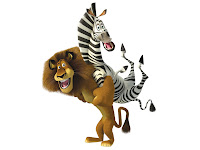Unit 31 - Computer animation
P2 - Explain different uses of animation
Lee Mercer
14/10/2013
Advertising
The advertising market is huge and can really make or break a product or service, if you are trying to sell a product you want to make sure you have as big of a market as possible and through advertising and animation you can do this.
So if we take for example that we are trying to sell a new car which holds new technology saving people in crashes it wouldn’t be very cost effective to video you smashing cars over and over again. This is where animation comes in, you can design the car on the computer using programs that can still portray its crumple zones and show off the safety features and then move it into an animation program like after effects. Using this you can both show off your products and keep cost down as much as possible.
Creative arts
Animation doesn’t have to have a purpose it can be used for art, for expressing how you feel at a certain moment in time. Art throughout the centuries has been used to express artist’s feelings and show there talent using tools to make different types of art and animation is the same, it can be used to simply show the artists mind and thought process through a series of abstract images moving and flowing together.
Entertainment
Animation is used and seen every day in the entertainment industry, from your top of the range cinema movies to your games and even TV programs. Animation has changed the face of entertainment making it possible to show things that would be too expensive, large or dangerous to try to create in the real world.
Using animation we can create illusions that still images or objects are moving a key example of this is with Claymation programs such as Wallace and Gromit. Programs like this utilise both cameras to take the still images and computers to run the images together with Morphing, Tweening and Masking to create the illusion to the viewer of actual fluid movement.

Education
Education is changing rapidly and in most parts there is a vast overhaul and everyone is moving away from pens and paper and moving to electronic substitutes. As of this there are many new ways of getting your message across to students, one way of this is through animation.
Animation can be used in almost any subject to make learning fun via methods like showing how the bones in the human body move together to showing how to pick apart a document getting only the most important pieces.
Others
Since animation is moving forward there are new innovations that help everyone in ways never imagined these could be helping the forces train to helping architects plan for disasters.
Military
In the military the soldiers are often asked to train and surpass limits but it is not always possible to train for every situation as sometimes you may have to kill someone. There is a quite recent tool implemented into the army called the Dismounted Close Combat Trainer or DCCT for short. This tool is a virtual range connected to real army rifles, this tool helps train for combat situations that would be too dangerous to simulate in real life but can be safely and accurately done through computer animations.
Other examples of this are flight and boat simulations. It would be extremely expensive for every trainee pilot or sailor to be trained on actual vehicles so using animation we can create ultra-realistic simulators which mimic exactly what would happen if certain scenarios occurred.
http://www.youtube.com/watch?v=Eb5Y_1u_Qk0
Disaster planning
Another area where animation has made a huge impact is the architecture industry. Now as well as just making designs for buildings they can also simulate how the building would support its self in a disaster like a hurricane for example. This is a great tool and saves more than just money it saves lives.
